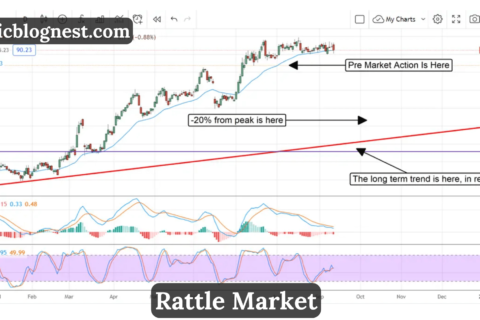Introduction
In today’s fast-paced business world, keeping operations streamlined and efficient is essential for growth. This is where Enterprise Resource Planning (ERP) systems step in, offering businesses the tools to integrate and manage their core processes more effectively. From finance and HR to supply chain management, ERP systems bring everything under one roof, allowing businesses to function like a well-oiled machine. However, simply implementing an ERP system isn’t enough—it’s all about choosing the right system, optimizing it, and ensuring it evolves with your company’s needs. In this blog, we’ll explore some practical ERP tips for your business(https://noticviralweb.blogspot.com/2024/04/consejos-erp-empresa.html), helping you maximize efficiency, overcome common hurdles, and make the most of your investment.
Understanding ERP Systems
Definition and Purpose
At its core, an ERP system is software designed to integrate various functions within a business into one unified system. Think of it as a centralized hub where all key operations—such as finance, human resources, manufacturing, inventory, and sales—are connected. Instead of using multiple software programs to manage different departments, an ERP system consolidates everything, providing real-time data and insights that enable better decision-making.
The primary goal of ERP is to improve efficiency and accuracy by automating processes and reducing the need for manual data entry. By having all business data in one place, employees can work more effectively, customers receive better service, and management can keep an eye on the big picture with less effort.
Key Components
ERP systems generally consist of several core modules that cover various aspects of business operations. Some of the most common modules include:
- Finance: Tracks income, expenses, accounts payable/receivable, and overall financial performance.
- Human Resources (HR): Manages employee information, payroll, benefits, and performance reviews.
- Supply Chain Management: Helps track inventory, procurement, and logistics.
- Sales and Marketing: Automates sales processes, tracks leads, and measures marketing efforts.
- Customer Relationship Management (CRM): Focuses on customer interactions, sales forecasting, and customer service.
By integrating these modules, businesses can ensure that all departments work from the same data, fostering collaboration and reducing silos.
Benefits of Implementing an ERP System
Increased Efficiency
One of the most significant advantages of an ERP system is its ability to streamline business processes. By automating repetitive tasks like order processing, inventory tracking, and financial reporting, ERP eliminates inefficiencies and reduces human error. Instead of employees wasting time on manual data entry, they can focus on higher-value activities that directly contribute to business growth.
For example, imagine a company that manually processes hundreds of purchase orders every day. An ERP system can automate this process, significantly speeding up order fulfillment and allowing the company to handle more orders with the same staff.
Improved Data Accuracy
Having centralized data in an ERP system means fewer errors and more accurate information. When each department operates in its own silo with separate data systems, it’s easy for mistakes to occur—sales figures might not match inventory records, or finance might struggle with inaccurate payroll data. With ERP, everyone pulls from the same database, ensuring consistency and reducing the likelihood of costly mistakes.
Accurate data also means better decision-making. Managers can view real-time insights on financial health, inventory levels, and employee performance, enabling them to make more informed decisions faster.
Enhanced Collaboration
https://noticviralweb.blogspot.com/2024/04/consejos-erp-empresa.html foster better communication across departments by integrating all areas of the business. For instance, when sales and inventory systems are linked, sales teams can immediately see what’s in stock before confirming an order, reducing the risk of overselling. Likewise, when finance and HR share data, payroll issues can be resolved quickly and efficiently.
Collaboration isn’t just about efficiency; it’s also about creating a more harmonious workplace. With everyone accessing the same system, misunderstandings and miscommunications are minimized, leading to smoother operations overall.
Tips for Selecting the Right ERP System
Assessing Business Needs
Before diving headfirst into choosing an ERP system, it’s critical to evaluate your specific business needs. Are you looking to streamline inventory management? Improve financial reporting? Scale your HR operations? Not all ERP systems are created equal, so identifying your priorities will help you find a solution that addresses your pain points.
For instance, a retail company may need a robust inventory management module, while a service-based business might prioritize CRM capabilities. Mapping out your business’s specific requirements will help ensure you don’t end up with a system that’s overkill—or worse, one that falls short of your needs.
Scalability and Flexibility
When choosing an ERP system(https://noticviralweb.blogspot.com/2024/04/consejos-erp-empresa.html), think long term. Your business will grow and evolve, and your ERP system needs to grow with it. Scalability is key. You want a solution that can handle increased data loads and user numbers as your company expands without slowing down or requiring an expensive upgrade.
Flexibility is also crucial, particularly if you operate in an industry that sees frequent regulatory or operational changes. Look for an ERP system that allows easy customization and adaptability so that you’re not locked into a rigid structure as your needs shift.
User-Friendliness
https://noticviralweb.blogspot.com/2024/04/consejos-erp-empresa.html system can only deliver results if employees actually use it. User-friendliness is often overlooked but critical for successful adoption. Complex systems with steep learning curves can deter employees from engaging fully, leading to inefficient usage and lost productivity. The simpler and more intuitive the interface, the easier it will be for your staff to adapt.
Before choosing a system, request a demo or trial period to see how user-friendly the interface is. Involve different teams in the process—what’s easy for your IT department might not be intuitive for your HR team.
Best Practices for Successful ERP Implementation
Planning and Strategy
Implementing an ERP system is no small feat. It requires careful planning and strategy to ensure everything goes smoothly. Start by defining a clear timeline for implementation, with key milestones and deadlines. Decide which departments will roll out first, and plan for any disruptions to normal business operations.
It’s also important to communicate the benefits of the ERP system to all employees from the beginning. Employees who understand the “why” behind the change are far more likely to embrace it. Lay out how the ERP system will make their jobs easier, whether through faster processes, better data access, or enhanced collaboration.
Employee Training
Training is a critical component of any successful ERP implementation. Even the most user-friendly systems will require training, especially if employees are transitioning from legacy software. Make sure you allocate sufficient time and resources for thorough training sessions. This could include everything from classroom-style sessions to one-on-one tutorials or self-paced online learning.
Remember, https://noticviralweb.blogspot.com/2024/04/consejos-erp-empresa.html isn’t just about learning how to navigate new software; it’s about understanding how new processes will align with existing workflows. Encourage employees to ask questions and offer feedback throughout the training process, as this can help identify potential issues early on.
Data Migration
Moving your existing data into the new ERP system can be one of the most complex parts of the implementation process. Ensure that data is cleaned, verified, and prepared before the migration begins. Inaccurate or outdated data can lead to major problems down the line, so it’s essential to audit your data beforehand.
Working closely with your ERP provider during this phase will help ensure the migration process is as smooth as possible. They’ll offer best practices and tools to facilitate the transfer while preserving data integrity.
Common Challenges and Solutions
Resistance to Change
One of the most common challenges during ERP implementation is employee resistance to change. People often feel uncomfortable with new systems, particularly if they’re used to doing things a certain way. The best way to counter this resistance is through clear communication and reassurance. Highlight the benefits, provide ample training, and be patient as employees adjust.
Integration Issues
Integrating your new ERP system with existing software or legacy systems can also be a significant hurdle. Some older systems may not easily communicate with modern ERPs, leading to data silos and inefficiencies. To address this, work with your IT team and ERP provider to ensure proper integration or explore middleware solutions that bridge the gap between old and new systems.
Cost Management
https://noticviralweb.blogspot.com/2024/04/consejos-erp-empresa.html implementation can be costly, especially when factoring in software, training, and maintenance. Managing these costs requires careful budgeting and perhaps even exploring phased implementation to spread the expense over time. Additionally, cloud-based ERP systems can offer more cost-effective solutions, as they require less upfront investment and lower maintenance costs compared to on-premises systems.
Measuring Success Post-Implementation
Key Performance Indicators (KPIs)
Once your ERP system is up and running, how do you know if it’s truly delivering the results you hoped for? This is where KPIs come into play. Some useful KPIs to track include:
- Operational Efficiency: Are processes running more smoothly and quickly? Are employees spending less time on manual tasks?
- Data Accuracy: Has the quality of your data improved? Are reports more reliable?
- Cost Savings: Is the ERP system helping reduce operational costs?
- User Adoption: Are employees actively using the system, and how efficiently are they navigating it?
Regularly measuring these metrics will provide a clear picture of how well your ERP system is performing and where improvements may be needed.
Continuous Improvement
ERP implementation isn’t a “set it and forget it” process. To get the most out of your system, continuously review its performance and look for ways to optimize it based on user feedback and changing business needs. By fostering a culture of continuous improvement, you ensure that your ERP system evolves alongside your business, consistently delivering value.
Conclusion
ERP systems can be transformative for businesses of all sizes, offering the potential to boost efficiency, enhance collaboration, and improve decision-making. By carefully selecting the right system, planning your implementation strategy, and overcoming common challenges, your business can unlock the full potential of ERP. These ERP Tips for Your Business(https://noticviralweb.blogspot.com/2024/04/consejos-erp-empresa.html) are designed to guide you through the process, ensuring that your system not only meets your current needs but scales with you as you grow.
FAQs
What is an ERP system, and how does it benefit my business?
An ERP system integrates core business functions into one platform, streamlining operations, improving data accuracy, and fostering collaboration across departments.
How do I choose the right ERP system for my business?
Start by assessing your specific business needs. Consider factors like scalability, flexibility, and user-friendliness to ensure the system can grow with your business and is easy for employees to use.
What are common challenges when implementing an ERP system?
Common challenges include employee resistance to change, integration issues with legacy systems, and managing the costs of implementation. Proper planning, training, and clear communication can help address these challenges.
How can I ensure successful ERP implementation?
A successful ERP implementation requires a detailed plan, thorough employee training, and careful data migration. Engaging employees early and providing ongoing support are also key to success.
What metrics should I use to measure ERP system success?
Key metrics include operational efficiency, data accuracy, cost savings, and user adoption. Tracking these KPIs will help you evaluate the effectiveness of your ERP system over time.






